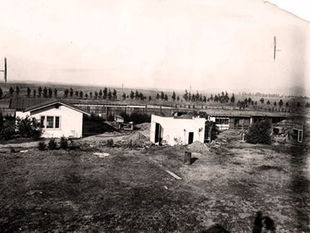
Episode 109: Anatomy of a Murder: The Webster-Parkman Trial
Dec 31, 2024
2 min read
0
0
0
In the mid-19th century, Boston was gripped by one of the most sensational criminal trials in American history. The case of Dr. John White Webster, a respected Harvard professor, accused of murdering another prominent Bostonian, Dr. George Parkman, would not only shock the city but also mark a turning point in the development of forensic science. The trial would lay the groundwork for the birth of forensic anthropology, a field that would change criminal investigations forever.

The case itself was a perfect storm of intrigue, from the bizarre murder to the high-profile nature of the individuals involved. Dr. Parkman, a wealthy and influential man, had mysteriously disappeared in November 1849. When his dismembered remains were discovered in Webster’s laboratory, the evidence seemed damning. But it wasn't until the trial that the world saw the rise of forensic expertise. The presentation of forensic evidence was groundbreaking at the time, with Harvard professors Oliver Wendell Holmes Sr. and Jeffries Wyman testifying about the remains and contributing to the development of forensic anthropology. They analyzed the bones and the manner of death, setting the stage for future advancements in criminal investigations.
Webster’s defense, however, was riddled with missteps. The attorneys, who were primarily civil lawyers, failed to use vital evidence that could have potentially cleared Webster’s name. They ignored the notes Webster had prepared, which pointed to Ephraim Littlefield, the janitor, as a possible suspect. Despite his apparent knowledge of the crime and his suspicious behavior, the defense never accused Littlefield. Additionally, crucial forensic evidence, like the handwriting analysis linking Webster to a bogus letter, went largely unchallenged. The jury, under the guidance of Chief Justice Lemuel Shaw, delivered a guilty verdict in less than three hours, and Webster was sentenced to death.

What followed was a public hanging that sealed Webster’s fate and left the city—and the academic world—shaken. But despite the tragic nature of the crime, the case had far-reaching implications. Harvard, through the involvement of Holmes and Wyman, became a central figure in the development of forensic science. This trial, one of the first to use forensic anthropology, helped lay the foundation for future research in criminal investigations.
If not for this high-profile case, forensic anthropology may not have emerged as a formal discipline until much later. Thomas Dwight, who succeeded Holmes at Harvard in the 1870s, would later be called the "father of forensic anthropology." And in 1894, George Dorsey would become the first person to receive a PhD in anthropology from Harvard, marking another milestone in the field's development.
The Webster-Parkman case may have begun as a horrific tale of murder, but its impact went far beyond the tragedy. It shaped the future of forensic science and set the stage for the criminal investigations we rely on today. Had it not been for this murder mystery in mid-19th century Boston, forensic anthropology might have been delayed as a discipline by decades. It's a reminder that history, even at its darkest moments, can lead to innovation that changes the course of the future.





